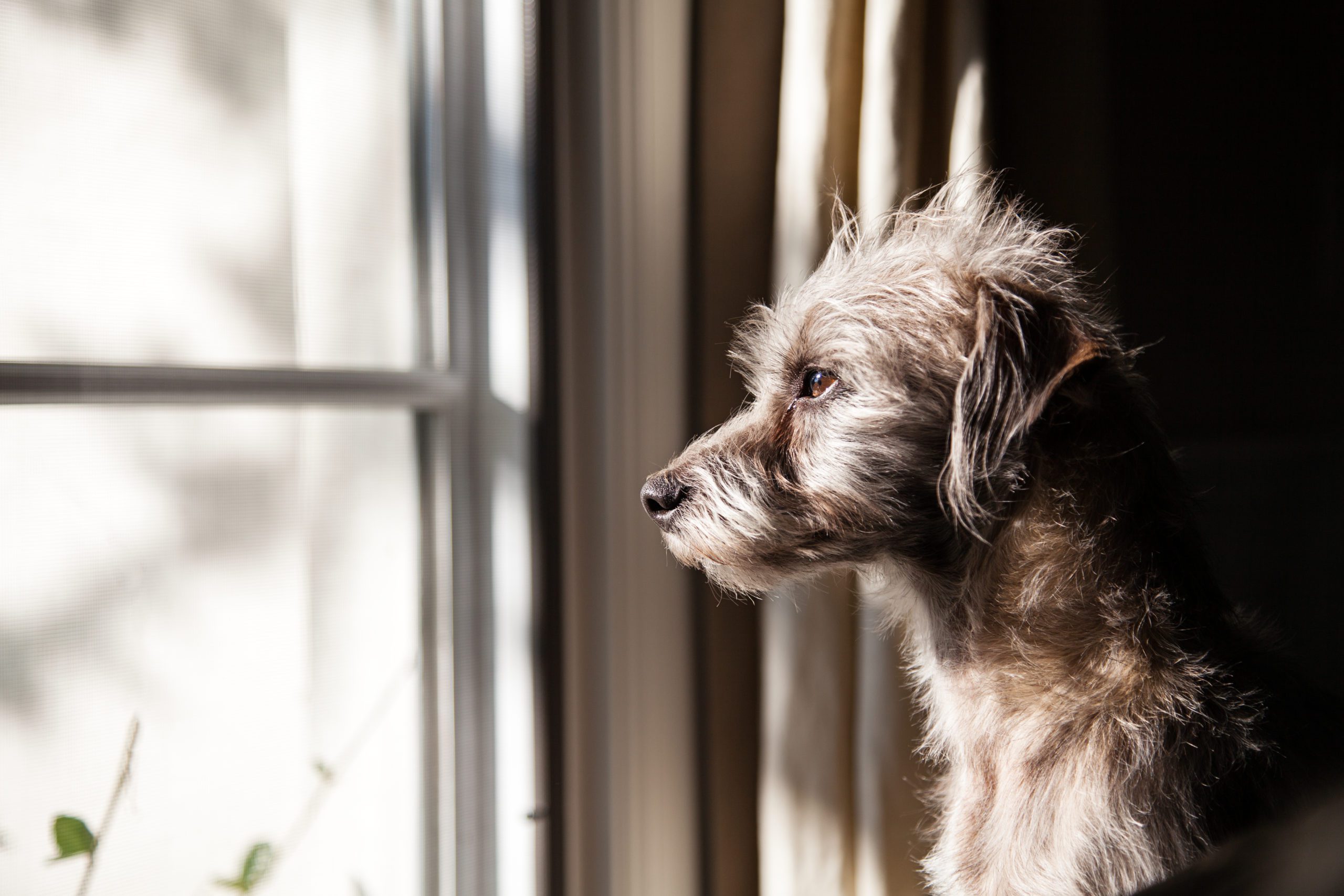
Dogs and Anxiety: A Common Problem
Most pandemic pups have not had enough socialization and training to understand that when their person is leaving, they’ll be back. As life gradually returns to normal, dogs and anxiety may become a problem for many pet parents, especially for those who adopted during the pandemic. Even dogs that have never exhibited signs of separation anxiety could be at risk. Here are some dog separation anxiety tips that can help.
Dogs developing or exhibiting anxiety is actually quite a common problem. Unfortunately, the signs of separation anxiety are often mistaken for bad behavior. People adopted new pets at record rates during the pandemic, while others spent more time than ever before with their furry family members. Pets made cameo appearances during Zoom calls, and their efforts to interrupt work time to gain attention became some of the most popular posts and shares on social media. The problem? Dogs have gotten used to having their family home more often.
Signs of Separation Anxiety in Dogs
While most puppies go through a chewing or destructive phase, most eventually outgrow it or learn through training that it’s unacceptable behavior. As previously mentioned, pet parents often mistake signs of separation anxiety for poor behavior and scold their pups. They’re simply demonstrating that they are experiencing real stress. According to the ASPCA, here are some behaviors your dog may exhibit:
- Anxious behaviors like pacing, whining or trembling while you’re gone or as you prepare to leave.
- Excessive barking or howling.
- Destructive acts, such as chewing or digging, particularly around doors or windows.
- Accidents in the house – urinating or defecating.
- Excessive salivation, drooling or panting.
- Desperate and prolonged attempts to escape confinement, potentially ending in serious injury.
Unfortunately, many of the behaviors are the most common reasons cited by owners who are surrendering or rehoming their pets. With some simple steps, most of these behaviors can easily be corrected. However, more intensive measures may be necessary for pets with severe or chronic separation anxiety, and the behaviors may never disappear entirely. Here are some steps you can take for basic separation anxiety training.
- When used appropriately, crates are an important training tool for separation anxiety training. A crate provides your pup with a safe, quiet place, and many dogs feel safer and more comfortable when they’re in their crates while their owner is away. The goal is not to crate your dog all day to solve separation anxiety. A crate is meant to keep your pup and your home safe for reasonable periods of time while you teach the pet to enjoy being alone. Establishing positive associations with the crate, like treats or toys, can help pets be happy and relaxed while crated.
- Counter-conditioning teaches your pup to be comfortable in the world and to form positive associations with new experiences. Counter-conditioning shows your furry friend that separation is not permanent and that your departure and return will come with a reward. Start by leaving your pup alone for short periods. Give your pup a small treat when you leave and again upon your return. Gradually, most pups will slowly stop exhibiting signs of separation anxiety and remain calm and relaxed while you’re away from home.
- Desensitization helps make your departure routine less distressing. When you’re going out, your dog picks up on cues, like grabbing your keys or putting on your coat. You can desensitize your pup by varying your departure routine or breaking the association with your departure entirely by picking up your keys and then sitting down to watch a program or making a snack. You can also praise your pup and give them a high-value treat just before you touch your keys or coat. Eventually, your pup might even look forward to the signs you’re about to leave.
- Getting plenty of exercise and playtime can help ease signs of separation anxiety in dogs. A pup that’s had a brisk walk or some playtime with you is far more likely to settle down when you leave than one that’s bursting with energy. This is especially true for high-energy dogs, or larger breeds, who will burn it off in any way possible while left alone. Don’t neglect your puppy’s mental muscles. A good mental workout can be just as exhausting as a physical one. Training sessions, puzzle toys, and cognitive games are all good choices. Check out these helpful tips for cognitive training from The American Kennel Club.
- A really effective trick for separation anxiety training takes some self-control on the part of the pet parent. One of the best things about dogs is they are always happy to see you, even when you’ve simply left the room or gone out to collect the mail. But dogs take their cues from our behavior, so don’t make too much production out of leaving or returning, even if your pup gets excited. While this one is tough, it can definitely help.
If these basic dog separation anxiety tips and separation anxiety training methods don’t solve the issue, don’t give up. Talk to a professional dog trainer or your vet about advanced training techniques. If all else fails, see your vet to determine if medication may be an appropriate treatment for dogs with anxiety.
Disclaimer: Not intended to be a substitute for professional veterinarian advice, diagnosis, or treatment. Always seek the advice of your veterinarian with any questions you may have regarding the medical condition of your pet. If you think your pet has a medical emergency, call or visit your veterinarian or your local veterinary emergency hospital immediately.

